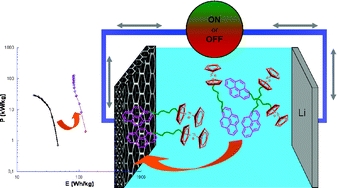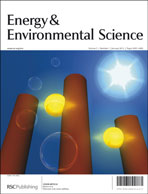In situ redox functionalization of composite electrodes for high power–high energy electrochemical storage systems via a non-covalent approach†
Abstract
The growing demand for new global resources of clean and sustainable energy emerges as the greatest challenge in today's society. For numerous applications such as hybrid vehicles, electrochemical storage systems simultaneously require high energy and high power. For this reason, intensive researches focus on proposing alternative devices to conventional Li battery and supercapacitors. Here, we report a proof of concept based on non-covalent redox functionalization of composite electrodes that may occur either during the calendar life or during the device functioning. The active material, a multi-redox


 Please wait while we load your content...
Please wait while we load your content...